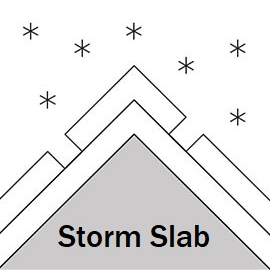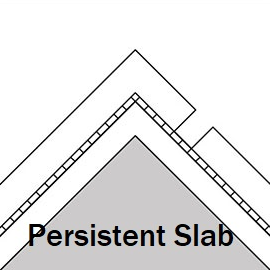Gudauri
Natural avalanches are possible, human-triggered avalanches are likely. Small avalanches in many areas, or large avalanches in specific areas, or very large avalanches in isolated areas.
New snow and wind on Saturday creates a couple of new problems to watch out for. When the sun comes out again on Sunday, we will also need to think about loose wet slides again. Don't forget about older weak layers in the high alpine.
Forecast issued at: 12 April 2025 08:00
Forecast valid until: 14 April 2025 08:00
Forecaster: Manu Greer
High Alpine
> 2600m
3 Considerable
Dangerous avalanche conditions. Careful snowpack evaluation, cautious route-finding and conservative decision-making essential.
Alpine
2000m - 2600m
3 Considerable
Dangerous avalanche conditions. Careful snowpack evaluation, cautious route-finding and conservative decision-making essential.
Sub Alpine
< 2000m
1 Low
Generally safe avalanche conditions. Watch for unstable snow on isolated terrain features.
Avalanche Problems
Storm Slab

Heavy snowfall to low elevations on Saturday is causing a danger of the new snow layer sliding in steep areas - a slide could be 40 - 80cms deep.
| Sensitivity | The specific avalanche problem type is reactive to human rider triggers. Easy to trigger with ski cut. |
| Distribution | Many locations. Evidence for instabilities is frequently found, in many locations. |
| Time of Day | All day |
| Trend | Deteriorating |
| Confidence | Moderate |
Persistent Slab

Weak facet layers in the lower half of the snowpack, in high alpine shady areas, could create a large avalanche event if triggered. As the snowpack warms, these layers are becoming moist and are less reactive, but they have still 'performed' in recent tests, especially in shallower areas (where the snowpack is less than about 140cm). A big weight of new snow has been added over the last week, which might increase this danger. Be wary of wide, steep slopes in the high alpine especially on N aspects, and avoid common trigger points such as areas where the snow is shallow (e.g. near rocks) or steep convex roll-overs.
| Sensitivity | The specific avalanche problem type is difficult to trigger with a human rider. |
| Distribution | A few, isolated locations; evidence for instabilities is rare and hard to find. |
| Time of Day | All day |
| Trend | Improving |
| Confidence | Moderate |
Wind Slab

Strong winds at higher elevations will build windslabs that will be easy to trigger for a while. Avoid steep areas that look loaded and 'fat'.
| Sensitivity | The specific avalanche problem type is reactive to human rider triggers. Easy to trigger with ski cut. |
| Distribution | Specific areas, with common characteristics. Evidence for instabilities exists, but it is not obvious and finding it requires careful observations. |
| Time of Day | All day |
| Trend | Deteriorating |
| Confidence | High |
Recent Avalanches and Snowpack
Recent Avalanches:
11th April - Kobi Valley, Large size 2, likely windslab, triggered by avalanche control, NW 3000m.
Snowpack:
50cm new snow reported upper Kubebi Friday 11th April. Lower than 2700m there was about 20cm on top of a melt-freeze crust. More snow has fallen overnight Friday, with stong SW wind recorded over at Altihut (Kazbegi). Before the recent snow, the snowpack was warm and moist everywhere, even at high elevations on shady aspects. There are still loose snow crystals near the ground in the high alpine zone. A soft melt-freeze crust under the new snow was found at 2960m on a NW aspect, and the lower loose layer of old moist facets failed across the block in an ECT test at the same location. 90mm of rainfall was recorded at 1950m since Weds 9th. There have been large amounts of snow at high elevations over the last week, up to 100cm, affected by S 1/4 winds. Previous rain had eroded most of the snowpack below 2500m on S aspects, with more snow surviving in some N aspect areas. Snow has started to settle at lower elevations since Thursday.
Weather
Up to 50 cm of new snow on Saturday is precicted by some models, with strong S 1/4 winds at high elevations. Sunday is looking clearer in the morning with cloud in the afternoon, and lighter winds. Freezing level dropping from 1700 to 850 on Saturday night, rising to 2000 on Sunday.
Disclaimer
Our avalanche forecasters are internationally qualified and experienced professionals, and data is provided by skilled observers. We encourage you to make your own observations and decisions, without relying solely on our forecast, since any forecast is a generalised 'best guess', and in certain cases it might be inaccurate. We can not be held liable for any actions you take in the backcountry that may result in injury, loss or death.